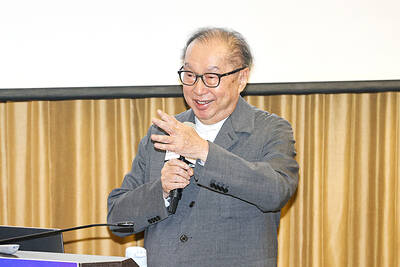Nissan Motor Co's venture in China said it will meet its 2005 sales target of 410,000 vehicles, as demand for passenger cars and small trucks surges in the world's third-largest vehicle market.
"The sales target for this year is on track," said Katsumi Nakamura, president of Dongfeng, a venture between Nissan and Dongfeng Motor Corp (
China, the world's third-largest vehicle market, is one of the most important growth regions for Tokyo-based Nissan, which aims to sell 4.2 million units globally in the year ending in March 2009, up 16 percent from 3.62 million it targeted this business year. Nissan has invested US$2 billion in China to produce compact cars and sedans, and is introducing more models to catch up with the sales leads there of Volkswagen AG, General Motors Corp and Honda Motor Co.
"China is and will be one of the markets that will support Nissan's growth," said Graeme Maxton, a director at Economist Intelligence Unit in Hong Kong. "Nissan made a good strategic way into the market with its partnership with Dongfeng."
Nakamura said China sales of Nissan-brand passenger cars including the Tiida and Teana sedans surged 2.7 times from a year earlier to 111,700 during the first nine months of 2005, while small truck sales rose 44 percent to 65,800 in the same period.
Nakamura said the venture will probably export more than 5,000 trucks this year, up from 1,500 in 2003. The company is exporting commercial vehicles to Pakistan and other countries in Asia and Africa. It has no plans to export passenger vehicles until 2007, he said, adding it wants to put priority on supplying the Chinese market, where demand is strong.
Shares of Nissan, in which Renault SA owns a 44.3 percent stake, fell 0.7 percent to 1,191 yen in Tokyo.
Nissan has been counting on its Tiida compact, which went on sale in April, to catch up with Honda and General Motors in China.
By 2007, Dongfeng Motor aims to increase sales to 300,000 passenger cars and 320,000 commercial vehicles. Of the 300,000 passenger cars, 80,000 to 100,000 will be Tiida compacts, Nakamura said.
"We expect China's vehicle demand to rise by 10 percent on average by 2010 or 2015 as more of the younger population in their 30s to 40s buy cars," Nakamura said.
The company will introduce six new models to China by 2006, including the Teana luxury sedan and Quest minivan. If there's demand for gasoline-electric hybrid vehicles in China "it's technically possible, but nothing has been decided," Nakamura said. Nissan's Altima sedan, which will be sold as a hybrid version in the US in 2006, shares the main components of the platform for the Teana sedan, he said.
Dongfeng plans to cooperate with Renault once France's No. 2 automaker settles an agreement with a Chinese partner, Nakamura said.
Renault is still in negotiations with Dongfeng Motor Corp, one of China's largest vehicle assemblers, and the southern city of Guangzhou to set up a venture to make cars, Renault Chief Executive Officer Carlos Ghosn said on Oct. 19.
"We are looking to generate synergies in joint purchasing of parts and systems, share the same supplier base and logistics, such as local transportation," Nakamura said. "Once Renault and Dongfeng finish talks, I will be called to join."

BYPASSING CHINA TARIFFS: In the first five months of this year, Foxconn sent US$4.4bn of iPhones to the US from India, compared with US$3.7bn in the whole of last year Nearly all the iPhones exported by Foxconn Technology Group (富士康科技集團) from India went to the US between March and last month, customs data showed, far above last year’s average of 50 percent and a clear sign of Apple Inc’s efforts to bypass high US tariffs imposed on China. The numbers, being reported by Reuters for the first time, show that Apple has realigned its India exports to almost exclusively serve the US market, when previously the devices were more widely distributed to nations including the Netherlands and the Czech Republic. During March to last month, Foxconn, known as Hon Hai Precision Industry

Taiwan Semiconductor Manufacturing Co (TSMC, 台積電) and the University of Tokyo (UTokyo) yesterday announced the launch of the TSMC-UTokyo Lab to promote advanced semiconductor research, education and talent development. The lab is TSMC’s first laboratory collaboration with a university outside Taiwan, the company said in a statement. The lab would leverage “the extensive knowledge, experience, and creativity” of both institutions, the company said. It is located in the Asano Section of UTokyo’s Hongo, Tokyo, campus and would be managed by UTokyo faculty, guided by directors from UTokyo and TSMC, the company said. TSMC began working with UTokyo in 2019, resulting in 21 research projects,

Ashton Hall’s morning routine involves dunking his head in iced Saratoga Spring Water. For the company that sells the bottled water — Hall’s brand of choice for drinking, brushing his teeth and submerging himself — that is fantastic news. “We’re so thankful to this incredible fitness influencer called Ashton Hall,” Saratoga owner Primo Brands Corp’s CEO Robbert Rietbroek said on an earnings call after Hall’s morning routine video went viral. “He really helped put our brand on the map.” Primo Brands, which was not affiliated with Hall when he made his video, is among the increasing number of companies benefiting from influencer

Quanta Computer Inc (廣達) chairman Barry Lam (林百里) yesterday expressed a downbeat view about the prospects of humanoid robots, given high manufacturing costs and a lack of target customers. Despite rising demand and high expectations for humanoid robots, high research-and-development costs and uncertain profitability remain major concerns, Lam told reporters following the company’s annual shareholders’ meeting in Taoyuan. “Since it seems a bit unworthy to use such high-cost robots to do household chores, I believe robots designed for specific purposes would be more valuable and present a better business opportunity,” Lam said Instead of investing in humanoid robots, Quanta has opted to invest